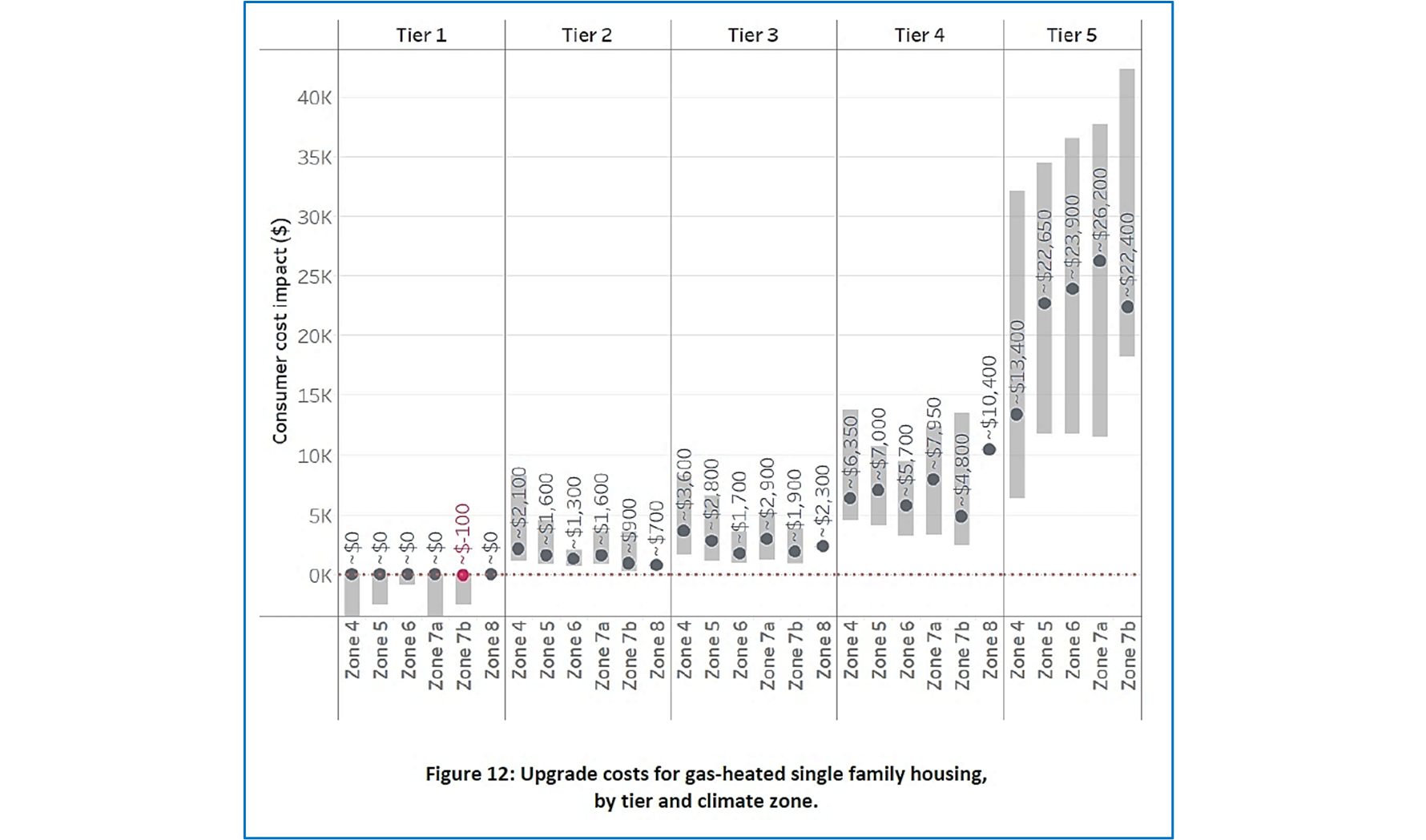Net Zero In The Building Code
 NET ZERO IN THE BUILDING CODE
NET ZERO IN THE BUILDING CODE
The Situation
In the rush to get the new energy requirements completed in time for the publication of the next edition of the National Building Code, important steps in the code development process have been rushed or skipped altogether, resulting in potential heath, safety and durability issues, all of which can carry significant liability issues for all involved. As a result, CHBA has submitted and has been successful in having had heard an important appeal to the code development process. The appeal seeks to have proper process, analysis and if necessary, changes made to the proposed code provisions before they are published. CHBA has been advocating for due process and analysis throughout the code development process, but in the absence of CHBA’s calls for due diligence being sufficiently heeded, CHBA was forced to go the appeal process route. Though ardent supporters of rushing the proposed code changes through to publication erroneously perceive this as a delay tactic, this is not that at all. This important action seeks to ensure proper process and due diligence is applied to this and all proposed code changes to avoid drastic unintended consequences that can place regulators, governments, industry and consumers in jeopardy.
In March 2021, CHBA submitted an appeal to the Canadian Commission on Building and Fire Codes (CCBFC) in relation to PCF 1617—a change to section 9.36. of the National Building Code containing new requirements for tiered energy performance compliance. The CCBFC struck an Appeal Committee, and CHBA staff and members presented our case during three hearing sessions convened in September 2021—the first time in the history of the CCBFC that an appeal has been heard.
CHBA is calling for due diligence to be applied to the proposed code change and has asked CCBFC to ensure that:
- cross-committee coordination is completed to resolve house-as-a-system issues
- a proposed penalty on those who do not conduct an airtightness test is removed
- impact analysis be conducted on the revisions made to the proposed change after public review
CHBA staff prepared and submitted more than 1,000 pages of evidence showing that the proposed change for energy performance compliance is not ready for publication. Speaking in support of CHBA at the hearing were former CHBA President and CCBFC Chair Bruce Clemmensen, former CHBA Technical Research Committee and Net Zero Energy Housing Council chairs and members of the CCBFC Standing Committee on Energy Efficiency Bob Deeks and Andy Oding, Tina Saryeddine from the Canadian Association of Fire Chiefs, and Margaret Webb from the Fenestration and Glazing Industry Alliance. The CCBFC Appeal Committee is to render its decision by October 27, 2021.
CHBA gave on appeal presentation at the first appeal hearing, along with the remarks by our supporting speakers. CHBA gave another presentation at the second appeal hearing in response to the SC Chairs remarks.
What this means for industry and consumers
Technical conflicts could pose risks to health and safety
Significant issues were identified through CHBA’s Technical Research Committee by builders, energy advisors, the glass industry, warranty providers, code officials and others applying current energy-efficiency requirements. The lessons learned by net-zero builders participating in CHBA’s Net Zero Home program have also been invaluable in identifying concerns related to potential conflicts with the proposed new requirements for energy efficiency and other requirements in Part 9.
Critical issues identified relate to overheating, the installation of additional air barriers between dwelling units, attachment of exterior insulation and cladding, risk of fire spread, negative pressure and soil gas ingress, equipment performance and durability, and ventilation. These and other issues need to be fully investigated and resolved before the changes are put into the Code, or builders will be forced to comply with new requirements that carry potential health and safety concerns.
Affordability further in jeopardy
A revision made after public review would penalize builders who cannot conduct an airtightness test, adding even more to the already exorbitant costs imposed on homebuyers by the proposed new requirements for energy efficiency. The Natural Resources Canada impact analysis report on the proposed change submitted to public review shows that the costs for tier 5 go up to more than $40,000 per home. The revisions made to the proposed change after public review will drive those costs even higher. In addition, no prescriptive requirements have been included in the proposed changes for the proposed tiers 3, 4 and 5. If a province or territory chooses to adopt one of the higher tiers, there will be no option but to follow the performance path, and no credit to be gained without an airtightness test.

Source:2019-09-12 NRCan report to SC-EE on impact analysis
Governments called for a new minimum level of acceptable performance in relation to energy efficiency in homes with the Pan-Canadian Framework on Clean Growth and Climate Change and A Healthy Environment and a Healthy Economy action plans. New minimum acceptable targets should not come with unnecessary and excessive cost, burden, liability and potential serious negative consequences for consumers, industry (including warranty providers and insurers), and governments themselves. Clearly, this would not be in the best interest of Canadians.
Tier 5 overshoots stated net zero ready code goal
In addition to the above, and beyond the appeal process, extensive CHBA analysis completed earlier this year of 447 net zero ready homes also shows that the tier 5 level established in the proposed code change substantially overshoots the stated target of the code, as directed by the political process that initiated the tiered-code development. As a result, the proposed tier 5 code target misrepresents the ultimate goal for 2030 and adds undue burden on industry and thousands of dollars in construction costs that the consumer will unnecessarily have to bear. CHBA analysis showed that the current tier 4 is actually more reflective of net zero ready levels of performance and should therefore be the top tier of the code. CHBA has initiated a separate process urging the Commission to revisit the proposed technical requirements for tiers 4 and 5 and continues to push for this important correction to the code as well to bring the proposed tiered requirements in line with actual net zero ready performance. Read CHBA’s letter to the Commission here.
